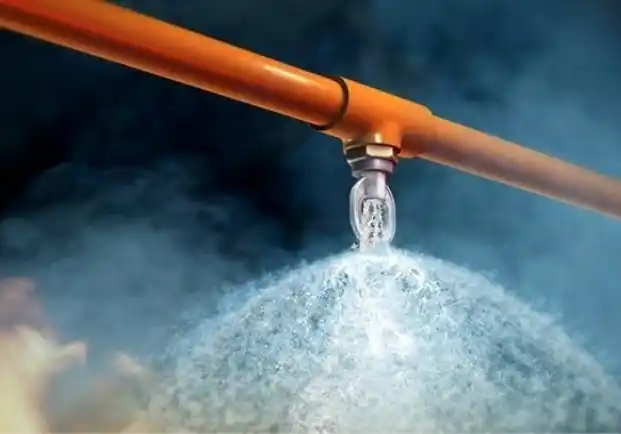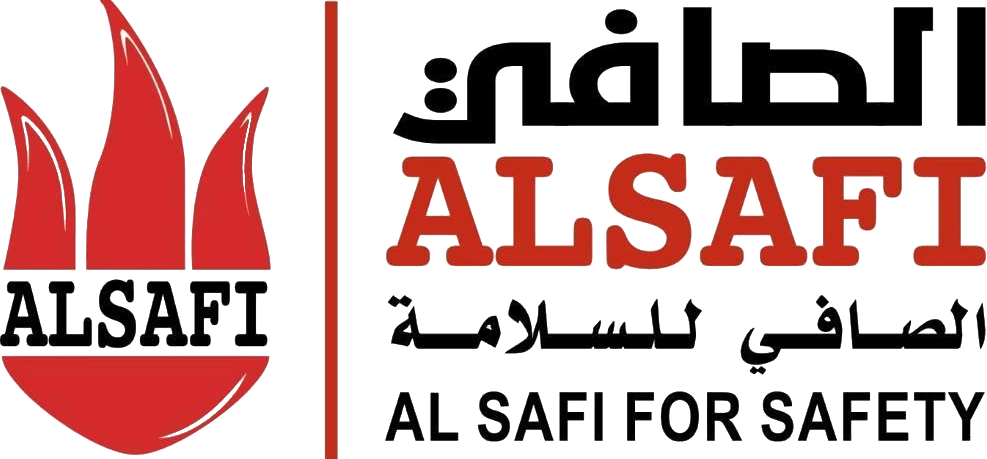Where is a water-based fire suppression system installed, and what are its components?

Water-based fire suppression systems are among the most widely used solutions for protecting lives and property from fire hazards. They extinguish fires quickly and are suitable for various types of facilities. These systems rely on an integrated network of pipes and sprinklers that activate automatically when a fire is detected, making them highly effective in mitigating potential disasters.
These systems use sprinklers to distribute water rapidly across the target area, providing much better coverage than traditional water sprinklers. Additionally, the fine mist droplets require less energy to evaporate, reducing the risk of property damage.
Components of a Water-Based Fire Suppression System
A water-based fire suppression system typically consists of the following key components to ensure maximum safety:
- Emergency water storage tank.
- Primary and backup pumps.
- Pipe network for water distribution.
- Automatic sprinklers.
- Control valves and pressure indicators.
- All components must be installed according to international NFPA standards to ensure efficiency and fast response.
Read more about: Foam Fire Suppression System
Where to Install Water-Based Fire Suppression Systems
With increased attention to safety, water mist fire suppression systems have become widely used in commercial and residential environments, including warehouses, factories, machine rooms, ICU units, hospitals, villas, and palaces.
Their popularity stems from their ability to protect property effectively, ease of installation, cost-effectiveness, and higher efficiency compared to traditional alarm or suppression systems.
Whether building a new facility or renovating an existing one, installing a water-based system significantly reduces fire risks and ensures maximum coverage and property protection when optimally positioned.
How Water-Based Fire Suppression Systems Work
These systems rely on heat sensors. When the temperature exceeds a certain threshold, sprinkler heads automatically activate, releasing water directly onto the fire. This automatic activation enables rapid fire response without human intervention, minimizing potential damage.
Contact Al Safi Safety to get the best fire suppression systems and firefighting devices with the highest quality.
Advantages and Disadvantages of Water-Based Fire Suppression Systems
Water-based fire suppression systems are highly effective and easy to operate, but like any safety system, they have strengths and weaknesses that should be considered before implementation.
Advantages
- Automatic and fast response.
- Easy to maintain and operate.
- Effective for fires involving solid materials.
Disadvantages
- Not suitable for oil fires or electrical equipment.
- May cause water damage to documents or sensitive equipment.
- Depends on a reliable and continuous water supply.
Cost of Water-Based Fire Suppression Systems
Cost depends on the facility size, number of sprinklers, pumps, and water tanks. Overall, water-based systems are economical compared to other fire suppression options, particularly for large facilities. Their high efficiency in extinguishing fires quickly reduces reliance on costly Civil Defense interventions or complex alarm systems.
They also consume significantly less water than traditional fire extinguishers, reducing total cost. Components like pumps and tanks are available in various sizes to suit different budgets and applications.
Special offers make installation even easier. For cost-effective and efficient fire protection, a water-based system from Al Safi Safety ensures the best pricing in the Saudi market.
Why Al Safi Safety is the Ideal Partner for Fire Suppression Systems
Al Safi Safety provides supply and installation services for water-based fire suppression systems according to Civil Defense standards. With over 40 years of experience, the company has completed major projects including hospitals, factories, and commercial malls.
With a team of certified engineers, Al Safi Safety’s primary goal is to protect lives and property through reliable and sustainable solutions.
Choosing the right water-based system depends on facility type and potential hazards. Understanding the limitations of these systems helps ensure proper use in sensitive areas. For expert guidance and to ensure the safest setup, contact us.
FAQ About Water-Based Fire Suppression Systems
Is a water-based fire suppression system suitable for all facilities?
Yes, but it is not recommended for areas with electronic equipment or highly flammable materials that water cannot extinguish.
How often should the system be maintained?
Periodic maintenance should be performed at least every six months to ensure all components function properly.
Can water-based systems be combined with gas or powder systems?
Yes, in some projects, multiple systems are integrated to ensure full coverage for all fire types.
Does installation require Civil Defense approval?
Absolutely. Design and implementation must be approved by a specialized engineering office to ensure compliance.



